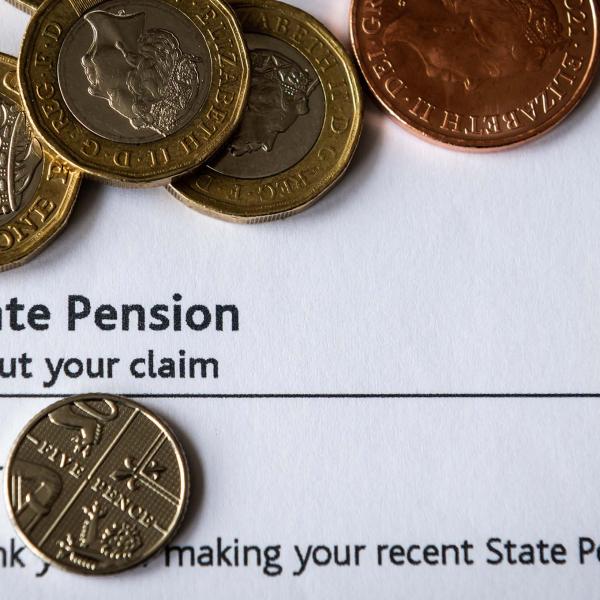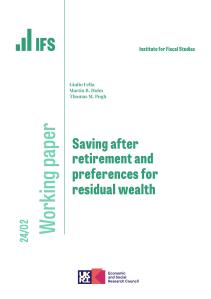Automatic enrolment – where employers have to enrol employees into a workplace pension scheme, from which employees can then choose to leave – increased pension saving by £2.5 billion per year by April 2015.
This is one of the main findings of new research, published today by the IFS and funded by the IFS retirement saving consortium.1 The research exploits data on almost half a million jobs from April 2011 to April 2015 to look at how contributions to workplace pensions by private sector employers and their employees have been affected by automatic enrolment.
The increase in pension saving arises from a big increase in pension membership. We find that automatic enrolment increased pension participation among those eligible by 37 percentage points, so that by April 2015, 88% of these private sector employees were members of a workplace pension scheme. In contrast, prior to automatic enrolment around half of these employees were members of a workplace pension and membership had been falling over time.
In 2012 there were around 5.4 million private sector employees who were a member of a workplace pension. By 2015 this had increased to 10.0 million. Of this increase of 4.6 million our estimates suggest 4.4 million was the result of automatic enrolment. At this point one-quarter of eligible private sector employees (3.4 million) worked for an employer that was still to be brought into the scope of the policy.
Further findings include:
- Automatic enrolment boosted pension coverage by the most among those aged 22 to 29, those earning between £10,000 and £17,000 per year, and those who have been with their current employer for less than a year. For each of these groups, for whom pre-reform coverage rates were particularly low, automatic enrolment has increased membership rates in workplace pensions by over 50 percentage points. In 2015 coverage among all of these groups had risen to over 80%.
- Most of those brought into workplace pensions as a result of automatic enrolment have, so far, only low levels of contributions. The minimum contributions to pensions under automatic enrolment are 2% of earnings between £5,824 and £42,385 (in 2015–16), with at least 1% coming from the employer. There has been a 24 percentage point increase in the proportion of eligible employees who have contributions around this level.
- But automatic enrolment has also increased the numbers of employees placing considerably more than the current minimum amount into a workplace pension. The proportion placing 5% or more of their total earnings into a workplace pension has increased by 7 percentage points.
- Automatic enrolment has more than doubled membership of workplace pensions among those not directly targeted by the policy. Those not eligible are: employees aged under 22, employees over the state pension age, those earning less than £10,000 per year, and those who just joined their employer. Automatic enrolment increased pension membership rates across these groups by 18 percentage points, compared to a baseline of 15% prior to the reform. The effect was a particularly large 28 percentage points among those earning under £10,000 per year (compared to a baseline of 18% prior to the reform).
- Our estimates suggest that in April 2015 a total of £2.5 billion a year more was saved in workplace pensions as a result of automatic enrolment. This amount is highly likely to increase significantly over the next few years as more employers are brought into the scope of automatic enrolment and as the minimum contributions increases from 2% to 8% of qualifying earnings.
Jonathan Cribb, a Senior Research Economist at the IFS, and an author of the report said,
"Automatic enrolment has been very successful in boosting membership of workplace pensions. This has been particularly true of younger employees aged 22 to 29 and relatively low earners on between £10,000 and £16,000 per year. Significant numbers of those not directly targeted by the policy have also been brought into workplace pensions, such as those earning less than £10,000. The story of automatic enrolment is certainly a case of so far so good. A key issue is whether those brought into workplace pensions at low contribution rates will remain in when minimum contribution rates start rising."
Ends
Notes to editors
1. The IFS Retirement Saving Consortium comprises Age UK, Association of British Insurers, Chartered Insurance Institute, Department for Work and Pensions, HM Revenue and Customs, HM Treasury, Investment Association, Legal and General Investment Management, Money Advice Service, and Tax Incentivised Savings Association. Support from the ESRC-funded Centre for the Microeconomic Analysis of Public Policy (CPP) at IFS, grant reference ES/M010147/1, is also gratefully acknowledged.
2. This research will be published on the IFS website at 00.01 on Thursday 17 November: www.ifs.org.uk. It will also be presented at a briefing, hosted by the Association of British Insurers in London, on the same day, 15:30 – 17:30. A response to the research findings will be given by Richard Harrington MP, the Parliamentary Under Secretary of State responsible for pensions at the DWP. Full details and a booking form can be found here: https://www.abi.org.uk/Events/2016/Automatic-enrolment-launch
3. Automatic enrolment into workplace pensions was legislated in the Pensions Act 2008 following the recommendations of the Pensions Commission. It means that employers must automatically enrol their eligible employees into a workplace pension. Eligible employees are those who are aged 22 to the state pension age, earn at least £10,000 per year and have been in their job for at least 3 months. Automatic enrolment began being rolled out to the largest employers in April 2012 and is gradually being extended to smaller employers with this scheduled to be complete in 2018.









